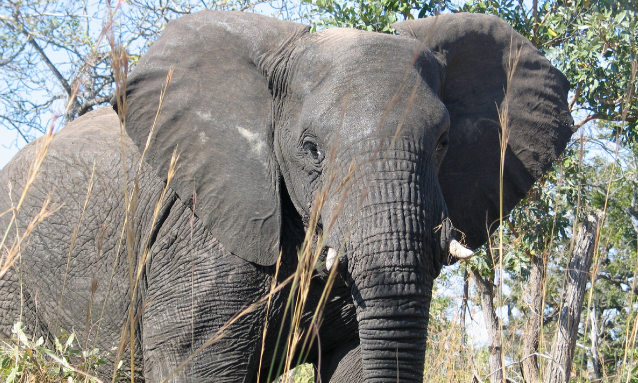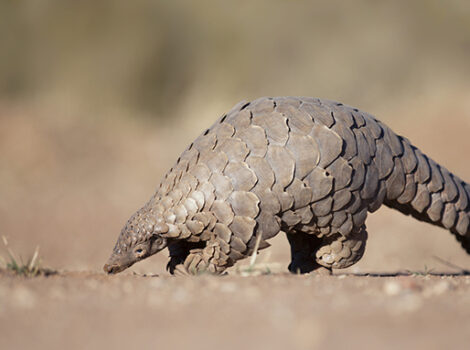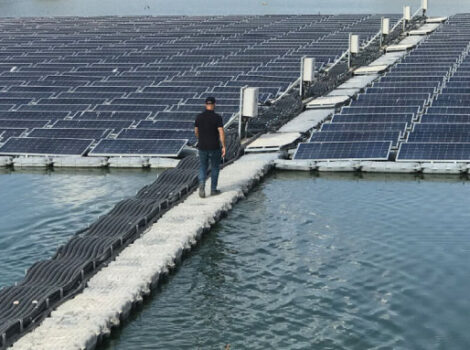
An international study led by the University of Pretoria’s (UP) Professor Rudi van Aarde suggests that the mass die-off of 350 elephants in one area of northern Botswana last year could be attributed to the fencing-in of these animals.
Prof van Aarde, Emeritus Professor of Zoology and Chair of Conservation Ecology at UP’s Faculty of Natural and Agricultural Sciences, said while the causes of the deaths are “still unknown and will never be known,” the fencing-in of these elephants in one area, and their relatively high densities, probably explain why the die-off occurred. The study, published in PeerJ – Life and Environment, suggests a “re-alignment or removal of fences that restrict elephant movements and limits year-round access to freshwater” is needed.
Botswana reported the death of 350 savannah elephants in May to June last year, sparking speculation among conservationists and the public around the cause. Carcasses were first found in the Okavango Panhandle region. Samples from the carcasses were tested by scientists in Zimbabwe, the USA, and at UP’s Faculty of Veterinary Science.
In September, officials in Botswana indicated that cyanobacteria (toxic bacteria which can occur naturally in standing water and sometimes grow into large blooms known as blue-green algae) was the source of the deaths. However, Prof van Aarde said,
“Restriction of freshwater supplies that force elephants to use pans as a water source possibly polluted by blue-green algae blooms is a possible cause, but as yet not supported by evidence.”
As part of his team’s long-running research programme, which considers regional elephant populations and their management, 10 elephants within the NG11 (an administrative district in northern Botswana where elephants and people share the land) were tracked using satellite tracking collars that were fitted on the elephants to map their movements, along with several hundred elephants in other areas across southern and eastern savanna Africa. He explained that conditions for elephants in NG11 differ from those of non-confined elephants in the surrounding landscapes:
“We show that NG11’s elephants are isolated by the Okavango River to the south-west and by fences on the other sides. NG11 imprisons the elephants, preventing their dispersal when numbers are high or when conditions may become harmful. The population growth rate within NG11 differs from those outside.”
The place in which the die-off occurred is not in a conservation area. Human-elephant conflict is high, leading to elephants avoiding the permanent freshwater sources along which people live, said Prof van Aarde. The study argues that restricted elephant movements made this sudden die-off much more likely.
“If a contagious agent were responsible, it would have implications for elephants beyond NG11 and neighbouring NG12, and the consequences of this are important for managing elephant populations across Africa.”
A team comprising UP and Pakistani scientists, including Prof van Aarde, deduced last year that malicious poisoning and poaching are unlikely to have played a role. Other species were unaffected, and elephant carcasses had their tusks intact.
“The apparent lack of fresh samples from carcasses and lockdowns of activities to contain the spread of COVID-19 add to the difficulties of establishing the cause of death. We may never have a definitive answer. Instead, the best we can do is to sketch the ecological aspects and setting of the affected area, its elephants and its surroundings,” said Prof van Aarde.
Article by Prof Rudi van Aarde/story by Primarashni Gower




The information in this article is substantially lacking in any scientific information as to the kill off cause. Allusions to the confinement by fences and nothing else except the algae reason given earlier is not helpful. Zoo elephants do okay, but to have a heard of elephants of all ages die is certainly a toxin event. UP information is not helpful here other than to give information about fences. Other elephants drink from Okavango River without problems.